Located in the southwest corner of Ireland, County Kerry is one of the most evocative regions of the Emerald Isle. The county encapsulates everything that Ireland is known for into a smaller and more accessible area. It boasts outstanding nature, whether you want to hike along the Wild Atlantic Way or trek and bike through the 10,000 hectares of the Killarney National Park.
As well as stunning nature, it’s home to important religious sites, and, of course, historic castles. In this post, we’ll introduce you to eight of the most impressive castles in Kerry. It’s up to you to decide which one you’re going to visit first!
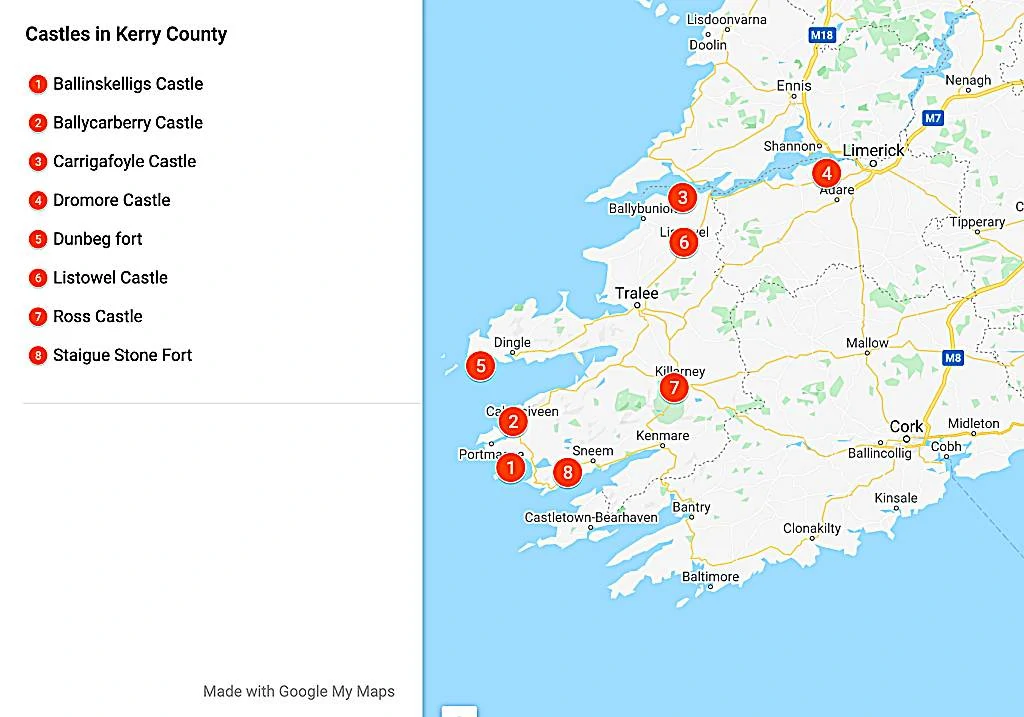
8 Castles to Visit in Kerry
1. Ballinskelligs Castle

Standing on a narrow promontory on the Iveragh Peninsula, Ballinskelligs Castle was built in the 16th century with two purposes in mind. The first was to protect the bay from pirates, and the second was to charge incoming trade vessels a tariff.
The castle is also known as McCarthy Mor and is one of many tower houses that were built all along the coasts of Cork and Kerry counties. Little is known about the castle’s history, but it’s an easy place to explore from Ballinskelligs Bay.
Where: Ballinskelligs, Iveragh Peninsula
When: 16th century
Style: Tower House
Open for Visit: Yes. Open 24 hours.
2. Ballycarbery Castle

Similar to Ballinskellings Castle, Ballycarbery Castle overlooks the water from its position near the mouth of the Valencia River. Regarded as the biggest and most impressive castle ruin on the Iveragh Peninsula, it can be seen from miles around.
Like Ballinskelligs, this was owned by the McCarthy Clan, who used this as their home. If you wish to visit the ruins of the castle, do be careful as it’s in a poor state. Make sure to at least walk up to the castle, even if you don’t want to go inside; you’ll get some incredible views of Cahersiveen from here.
Where: 2 miles from Cahersiveen
When: 16th century
Style: Tower House
Open for Visit: Yes. Open 24 hours.
3. Carrigafoyle Castle
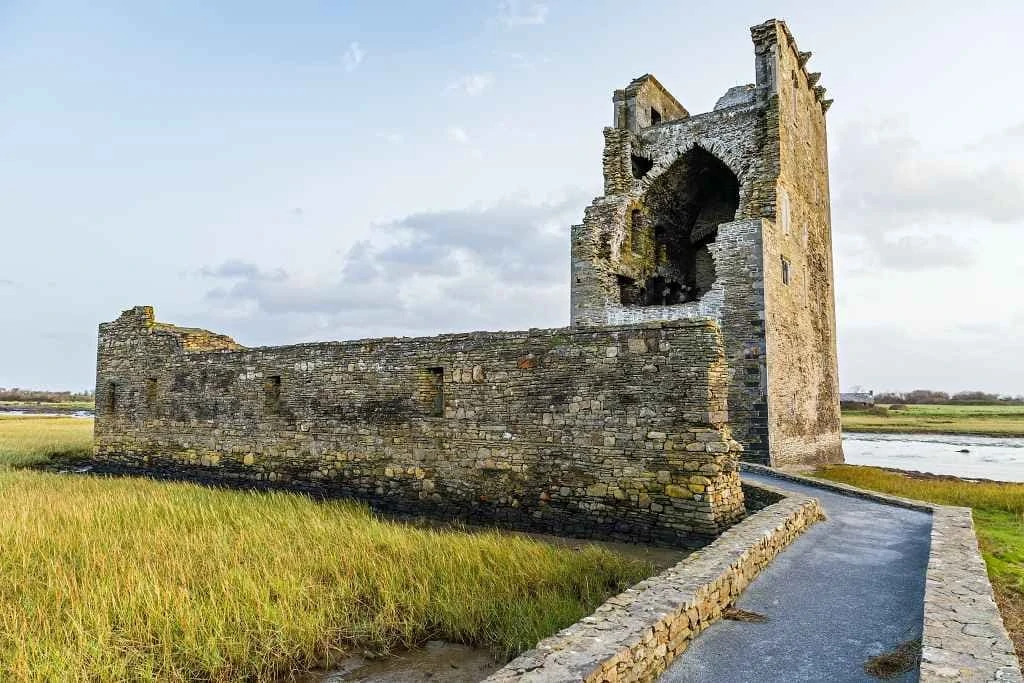
This castle is an impressive 86 feet high, rising from a channel between the mainland and Carrig Island in the Shannon Estuary. It was likely built at the end of the 15th century to guard over the shipping lanes that supplied goods to the town of Limerick.
It was attacked in 1580 from both land and sea during the Desmond Wars. You can still see signs of the attack as the land facing wall has a large hole in it. Heavy weapons were used on the castle, and all those who survived were massacred. The wall has not been restored, but some works have made sure that the castle is accessible and relatively safe.
Where: Ballylongford
When: 15th century
Style: MedievalTower House
Open for Visit: The castle has no visitor facilities, but you can walk up to it.
4. Dromore Castle
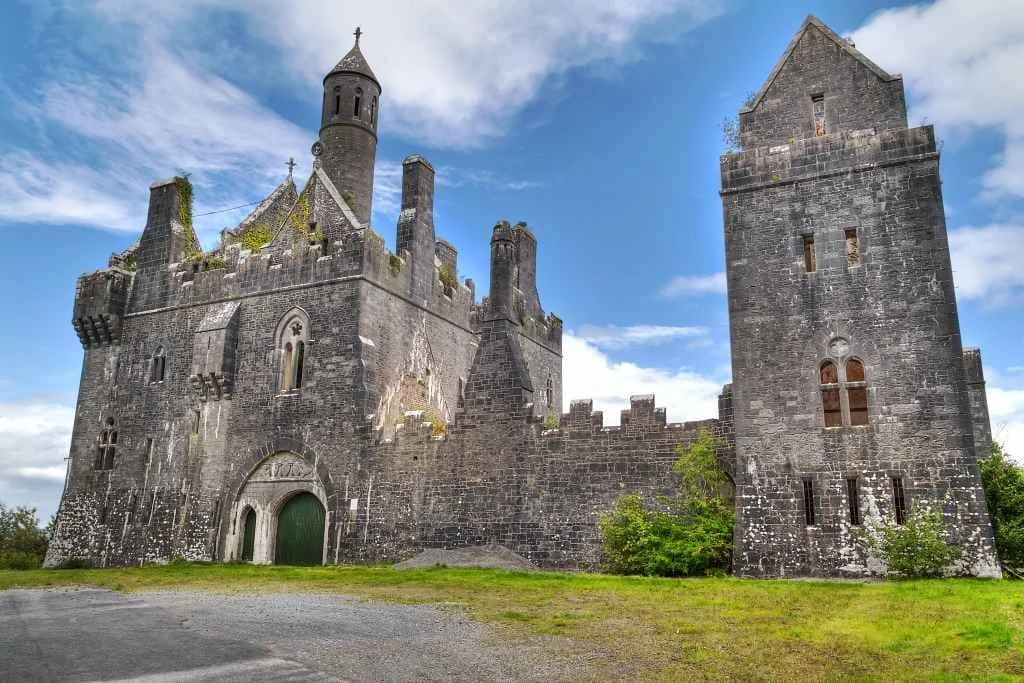
More modern than most of the other castles in Kerry, Dromore Castle is a manor house built around in the 1830s by the architect Sir Thomas Deane. The family home for the Mahony family was built in a Neo-Gothic design out of Roman Cement with limestone dressings.
Denis Mahony was a Church of Ireland minister and set up a soup kitchen during the Irish Potato Famine at Dromore. Another notable personality in the Mahony family includes Harold, the last Irish winner of Wimbledon, who welcomed Harold Boulton to the house – the writer of the lyrics to the Skye Boat Song. The castle is currently owned by an investment company.
Where: Templenoe
When: 19th century
Style: Neo-Gothic
Open for Visit: Yes, but there are no visitor facilities.
5. Dunbeg Fort
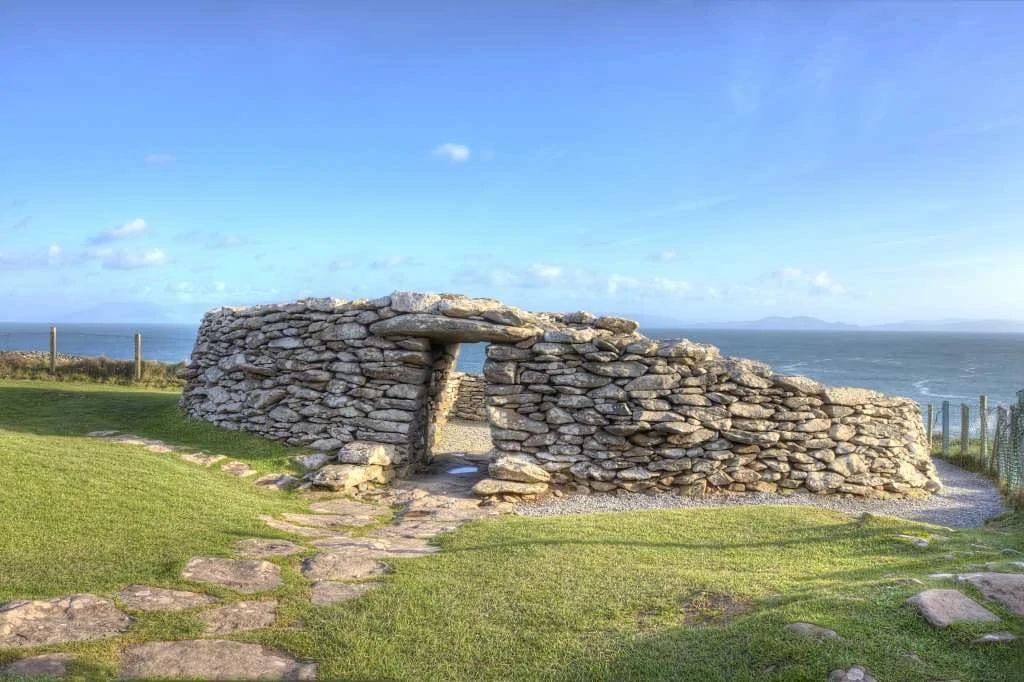
Part of the Fahan Group, a collection of prehistoric buildings located on the Dingle Peninsula, Dunbeg Fort dates back to the Iron Age – sometime between 500 and 300BC. It is located at the top of a rocky promontory with sheer cliffs down below.
Undoubtedly strategic at the time to protect against attacks, the fort is now at risk due to coastal erosion and is fenced off, with visitors unable to explore it properly. Nevertheless, seeing such an excellent example of a prehistoric building should not be missed on your travels along the Wild Atlantic Way.
Where: Ventry
When: Iron Age
Style: Iron Age Fort
Open for Visit: The fort is fenced off due to safety reasons. But you can visit and look from outside.
6. Listowel Castle

One of the best examples of an Anglo-Norman castle in Kerry, Listowel was most likely built in the 15th century on the foundations of an early building. It has a strategic position overlooking the River Feale.
The parts of the castle which still stand today have been well restored, and tourists are welcome to visit in the summer – although only 12 can take a guided tour at any one time. You can explore the four towers and curtain walls which are an impressive 50 feet in height.
Where: Listowel
When: 15th century
Style: Anglo-Norman
Open for Visit: Yes, click here for more information.
7. Ross Castle
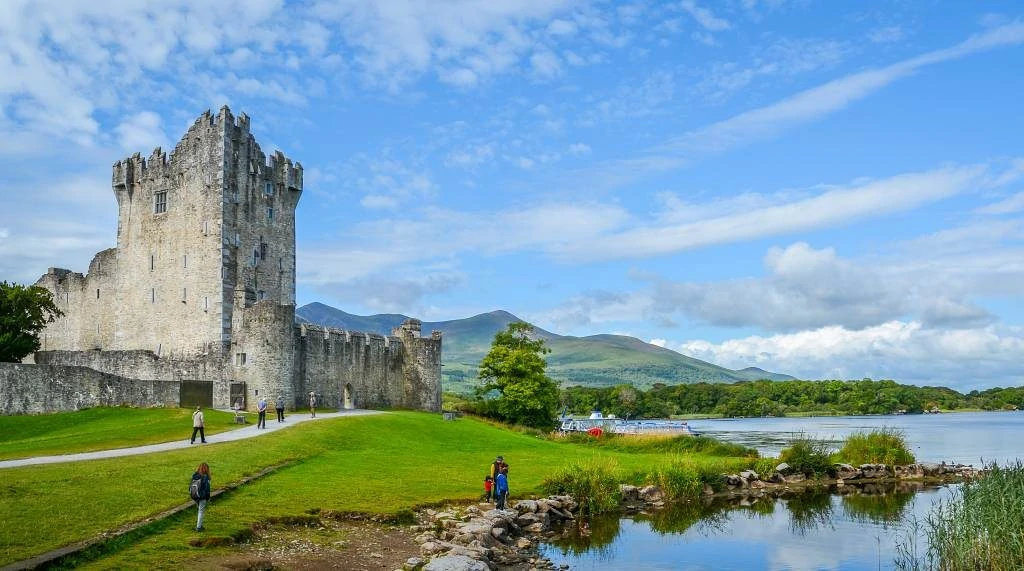
Built for the O’Donoghue Ross chieftains in the Middle Ages, Ross Castle overlooks the lower Killarney lake in the national park of the same name. It is this castle that held out longer than any other in the battle against Cromwell, before eventually being taken in 1652 by General Ludlow.
Legend has it that O’Donoghue is still sleeping under the waters of Lough Leane; anyone who sees him rise from the lake on a horse on the first morning of May every seven years gets good fortune for the rest of their lives. So, keep your eyes peeled if you visit in spring!
Where: Lough Leane, Killarney National Park
When: 15th century
Style: Tower House and Keep
Open for Visit: Yes, for more information check here.
8. Staigue Fort
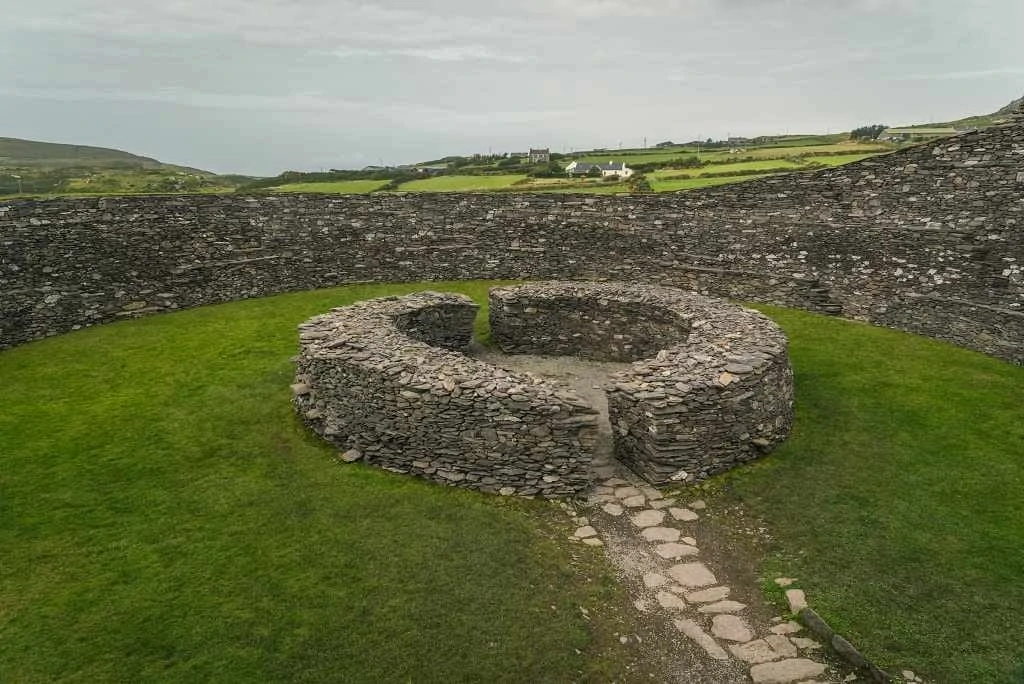
Not only is this said to be the best-preserved fort in Kerry, but the whole of Ireland. It overlooks Kenmare Bay to the south and was thought to have been built as a defensive stronghold for a local lord, or perhaps even a king. It’s not the only fort of its type in the area – the craft of dry stone walling has meant many early structures have survived in the English countryside.
Where: Staigue, Sneem
When: 300 – 400 AD (estimated)
Style: late Iron Age fort
Open for Visit: Yes. Open 24 hours .
